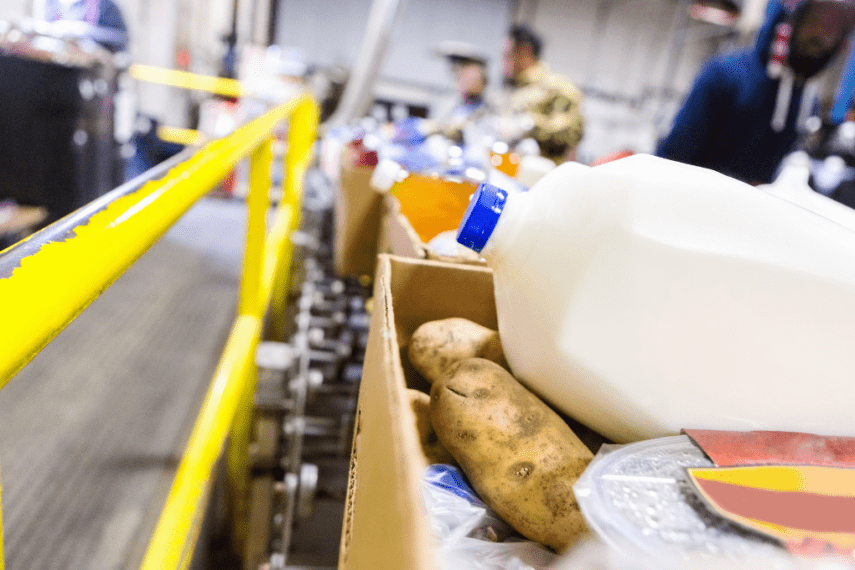
The Importance of School Meals
While school meals can nourish all children, they are critical for those experiencing food insecurity. School meals are the second largest food assistance program in the country and provide a host of benefits linked to health, development, and learning.
Students are offered a variety of fruits, vegetables, dairy, proteins, and whole grains and school meals must meet federal nutrition requirements. In fact, according to a 2021 peer-reviewed study by researchers at Tufts University and Icahn School of Medicine, food consumed at schools had the highest nutritional quality compared to foods consumed from grocery stores, restaurants, and other major food sources.
Milk’s Nutritional Contribution to School Meals
A 2017 study showed 77% of daily milk consumption and 70% of total dairy consumption for low-income school-aged children comes from school meals. Milk has a unique nutrient package that delivers 13 essential nutrients, including calcium, vitamin D, and potassium. These are three nutrients often lacking in the diets of Americans. Starting around school age, many children do not meet the daily dairy recommendations. These children are missing the critical nutrients and health benefits that dairy provides. The milk and other dairy foods provided with school meals can help bridge that gap.
Current School Milk Regulations
The milk provided in reimbursable school meals must meet certain regulations including:
- Milk should be fat-free or 1% (flavored or unflavored) and a minimum of 8 oz should be offered for it to count towards a reimbursable meal.
- Schools must offer at least two milk options and at least one should be unflavored.
For students with lactose intolerance:
- Schools can offer lactose-reduced and lactose-free versions of fluid milk without the need for a medical statement.
If a student has an allergy to milk, which is different from lactose intolerance, then a fluid milk substitute should be provided. The current regulations for fluid milk substitutes:
- Milk substitutes are mandatory for students with a medical statement stating they have an allergy and need an alternative beverage.
- At the discretion of the school district, schools may provide a non-dairy fluid milk substitute with a written request from the parent or guardian, for students without disabilities. In this case, nondairy beverages offered as fluid milk substitutes must be nutritionally equivalent to milk and provide specific levels of calcium, protein, vitamins A and D, magnesium, phosphorus, potassium, riboflavin, and vitamin B-12. These vitamins and minerals are typically not naturally occurring and are added to match the nutrient composition of dairy milk.
Milk substitutes are the only safe option for students with an allergy to dairy. For students with lactose intolerance, which disproportionately impacts students of color, lactose-free dairy milk is an excellent choice since not all milks are created equal. Many plant-based alternatives contain little or no protein and are missing critical nutrients that prevent them from being an approved replacement for dairy milk in school meals.
It is important to note that milk must be offered at each breakfast, lunch, or supper meal service. To decrease food waste, students may decline some of the foods offered and are not required to select milk with their meal.
Flavored Milk in School Meals
Flavored milk is a popular option with students and contains all the same essential nutrients as unflavored milk. The Dietary Guidelines for Americans and the American Academy of Pediatrics recognize that a small amount of added sugars, which fall within the daily calorie limit, can be used to increase the appeal of nutrient-rich foods, such as low-fat flavored milk. Flavored milk contributes only 4% of added sugars in the diets of children 2-18 years and is not associated with an increased BMI.
While there are many flavored milk formulations, the flavored milk served in school meals has an average of 8.2 grams of added sugar per 8 oz, slightly less than 2 teaspoons of added sugar. I often see headlines comparing chocolate milk to soda and other sugar-sweetened beverages, which is not an accurate comparison. Not only does flavored milk in schools have far less added sugar (an average of 8 grams per serving verse about 25 grams per serving in soda), but it also provides important nutrients that children aren’t getting enough of.
According to a study published in Nutrition Today, removing flavored milk from schools can lead to a decrease in total milk consumption and negatively impact nutrient consumption.
Visit the School Milk section of our website to learn more about milk in school meals.



